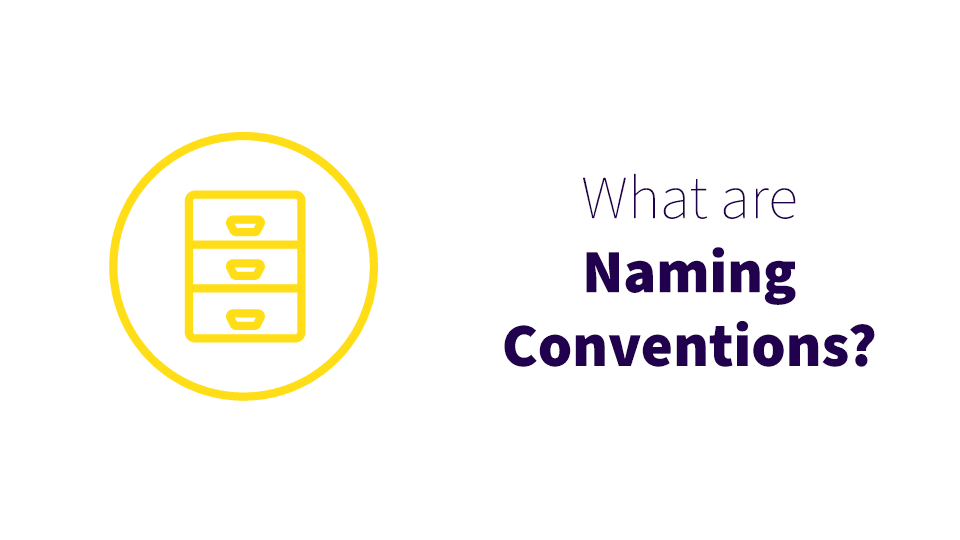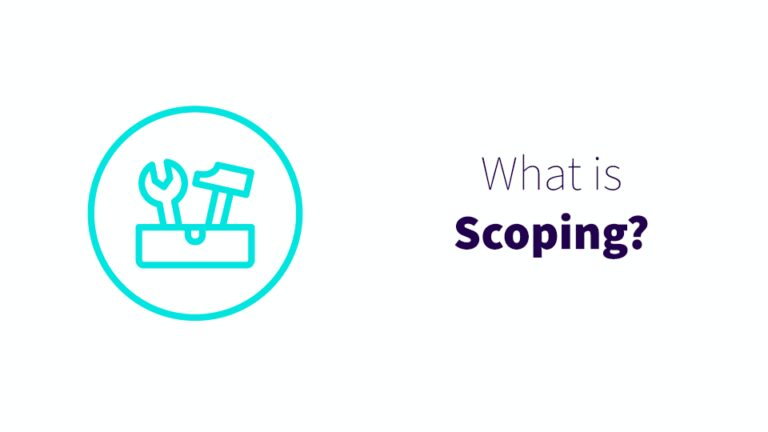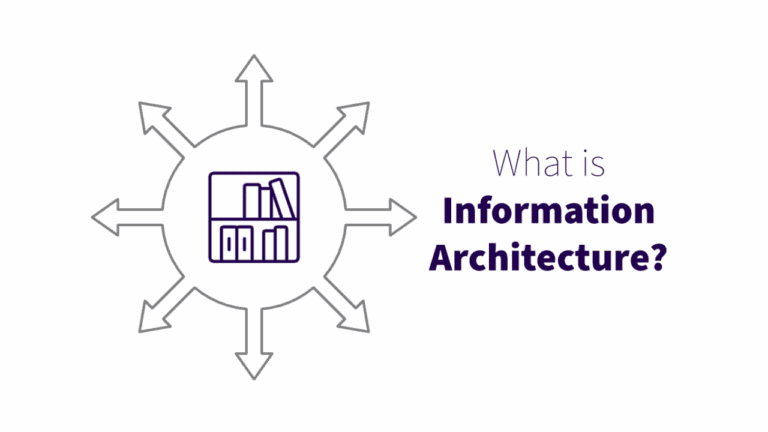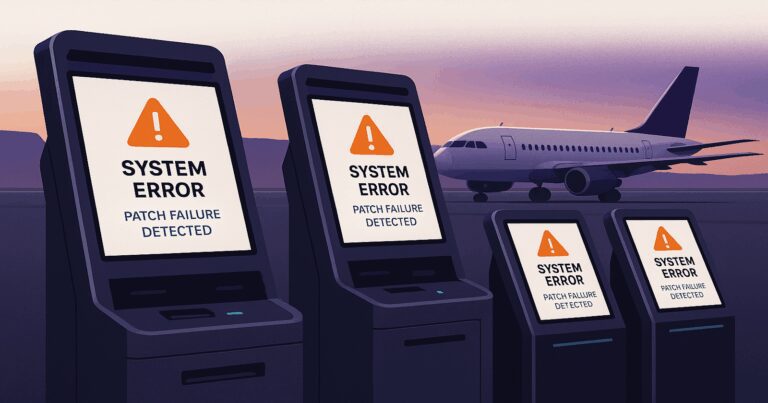Keep your team’s files findable with good naming conventions
“Hey, I can’t find the files for our expense logs from 2022 for the audit.”
“You’ll have to ask Jen, she knows where everything is.”
“Jen, where are those expense files?”
“Oh, it’s simple. Just log into SharePoint, go to the site called Jen’s SharePoint, click on the folder named Files, then look for STANLEY DOCUMENTS. Just keep clicking on things called 2022 or expenses and you should find what you need eventually.”
If this conversation felt familiar, something needs to change. At many companies, there’s no formal system for organizing data, documents, and folders. Instead, the way files are stored, organized, and viewed – what IT people call the information architecture – grows organically from the people who use the company’s systems.
This unsupervised approach leads to chaotic, unintuitive systems. Users waste their time searching for files. New employees feel lost. No one knows how to scope new projects. The Jens of the team, who know where everything is, spend half their day fielding information requests from their coworkers.
Luckily, there are strategies to make it easier to keep track of files. One way is naming conventions. Establishing some best practices about how your team names and organizes things like files, folders, and SharePoint sites can save hours of time.
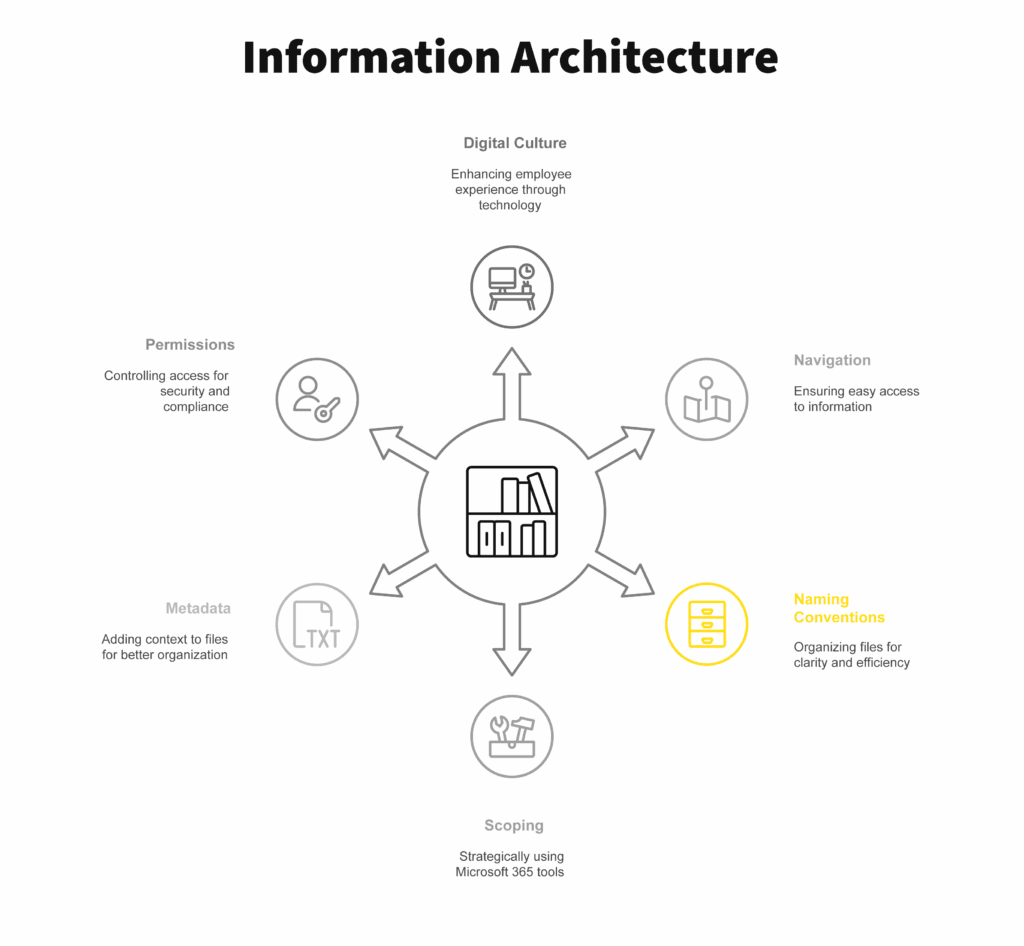
Why you should care about naming conventions and file paths
A file path represents where a particular file lives in a directory like a SharePoint site or a computer disc. It also represents the journey that a user takes to reach the file.
For example, a simple file path to the photos for an organization’s 2024 annual report might look like Marketing\2024 Annual Report\Photos. Finding those photos is easy, even for a new employee – context makes the path obvious.
In the real world, most file paths are not so simple. Here are some file paths WSC has come across during IT consulting jobs. (Names have been changed to protect the innocent.)
- 1 – Fisher Hawkins\CLOSED\2019\JULY 2019\Vasquez- 7.8.19\Vasquez\BA- Vasquez, Daisy\Conditions\Vasquez Resubmission\
- License and Permits\Audits\Massachusetts\Audit 2019\Mass audit April 23, 2019\1-Requested info for exam\Officers Questionnaire and Doc Request List\0-FINANCIAL DATA\2-Detailed ledger and bank statements\2017\fees\
- crap\Sanyo\WSC\OFFICE\SUSAN\SUSAN PROJECTS\F & F Campaign\Friends & Family Campaign\ANALYSIS\Q1 WSC Business plan review worksheet_files\
Imagine having to navigate to the 2017 bank fees documents for the 2019 audit. Unless you put those files there yourself and had a perfect memory, you’d be hopelessly lost. With good naming conventions, you can prevent this situation.
The benefits of good naming conventions include:
- Improved findability. Your employees spend less time searching for documents and more time working with them.
- Not wasting time recreating existing work. If it’s obvious where your team stores files, they’re less likely to assume a file doesn’t exist and recreate it.
- Reduced stress. Misplacing files and navigating an unclearly labeled directory is frustrating. A nice, neat, intuitive one feels far better.
- Easier compliance. Staying on top of compliance and finding files for audits becomes much simpler.
- Smoother onboarding. New employees can hit the ground running and begin work more independently.
Naming convention best practices
No matter what you or your employees are naming in your system, it’s best to name and organize folders with others in mind. Try to take the perspective of a new hire. Imagine if you had no context for a file or folder – would you be able to understand what it is and who it’s for?
Files and folders
Do:
- Use very descriptive folder names. A folder named“2024 Q4 Dog Toy Marketing Campaign” tells the viewer a lot more than one called “Marketing stuff”.
- Use longer folder names instead of deeper folder structures. A folder called “July 2024” works better than a folder called “July” inside a folder called “2024”.
- Think about what makes a file stand out. Name files to distinguish them from other documents in their folder. Naming each document in the folder “Blog posts” by the blog post’s title or topic (e.g. “Llama grooming for beginners” and “Benefits of alpaca wool”) is more informative than calling them “Blog post 1”, and “Blog post 2”.
- Consider truncation. The entirety of a folder or file name won’t always be visible, so put the most important or unique information towards the front of the name.
- Work with metadata too. The information attached to files can also help add context and improve findability. Learn more about metadata here.
Don’t:
- Name sites or folders after people. Use titles or roles instead.Not every employee knows that Sandy is head of HR, so call your HR folder “Human Resources”, or “Head of Human Resources”, not “Sandy Amatucci”.
- Use generic names like trash, data, files, and documents. File and folder names should communicate information about their contents. Everyone knows a folder has files in it, so calling it “Files” doesn’t add any context. Be specific!
- Create structures that are more than three folders deep. The longer the file path, the more confusing and frustrating the journey to reach the file. Keep things simple with shallow folder structures.
Teams and SharePoint
While many of the rules for files and folders also apply here are additional considerations for Teams and SharePoint sites.
Do:
- Clearly identify sites that are shared internally versus externally. Your team can better avoid security risks if they know which channels and sites give access to people outside the company. One straightforward way to do this is to include “Internal” or “External” in the SharePoint site name.
- Make sure new sites are easily distinguishable from other existing sites. Having three SharePoint sites all named “HR” would cause lots of confusion.
- Consider adding terminology to indicate permission scope. You could differentiate your HR sites like this:
- “HR Portal” – everyone at the company can view and access“HR Department” – only HR department members can edit
- “HR Archive” – long-term storage to meet regulatory requirements, HR department has read-only access
Intranets
Do:
- Make it stand out. Since your intranet is the central hub to your other company-wide SharePoint sites, it should be unique. Everyone at your company should be able to identify it easily.
- Personify your intranet. Your team will find it easier to talk about and relate to your intranet if it has a personality. Give it a name, icon, and color scheme that all reflect a character. Historical figures and characters from pop culture are popular choices – try Socrates, Buffy, or Snoopy. For more about this topic, read our post about digital culture in information architecture.
Don’t:
- Give it a name that could be confused for something else. So many companies name their intranet “SharePoint”, the same name as the company, or after a word or phrase they use all the time. Talk about confusing!
Good naming conventions are essential for information architecture
Information architecture doesn’t come naturally to everyone. That’s how you wind up with file paths that start with “crap” and end ten layers deep. It’s nothing to be ashamed of, but it is something to work on.
WSC recommends establishing file and folder naming convention guidelines and educating employees so they understand how naming conventions can make life easier. Remember, following naming convention best practices makes it far easier to find files. It saves time, makes work less stressful, eases compliance, and helps new employees onboard.
WSC has helped dozens of companies create naming convention policies and taught their teams how to follow them, saving countless hours of frustration and lost productivity. Want us to do the same for you? Contact us.

